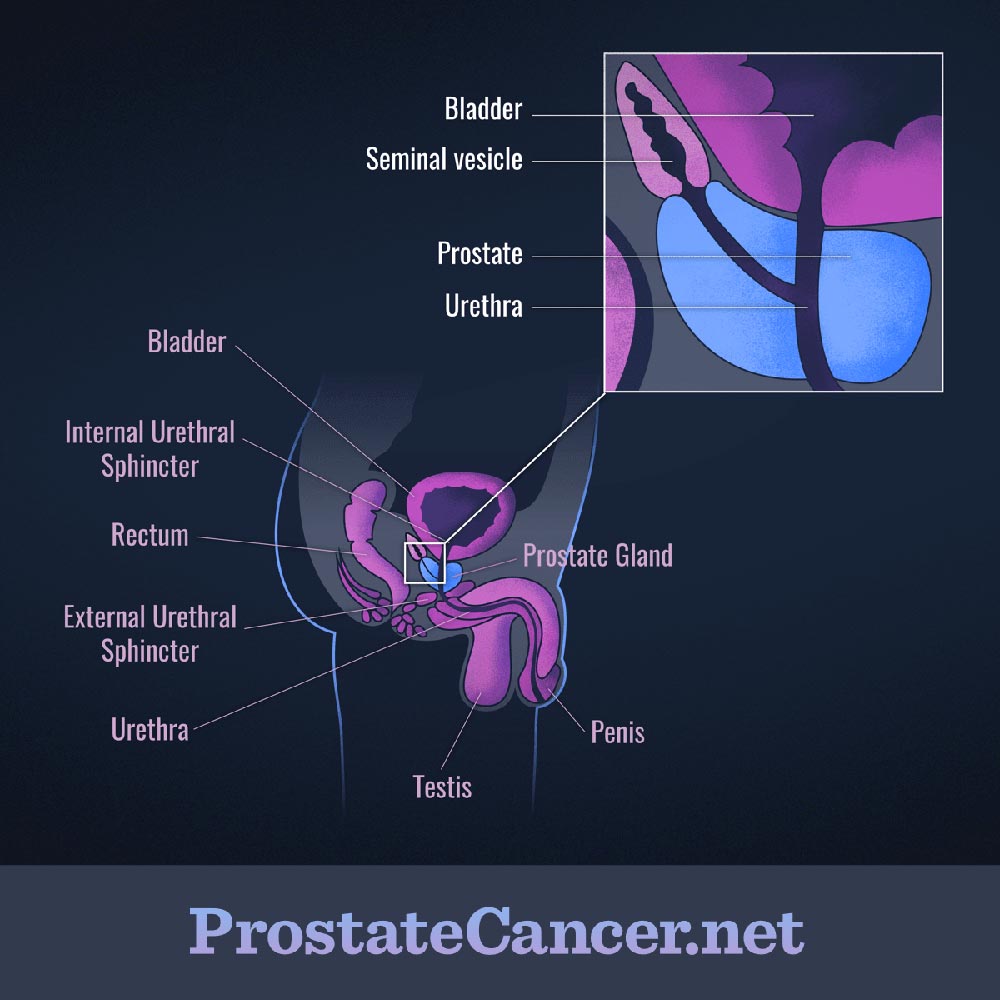What Is the Prostate?
Reviewed by: HU Medical Review Board | Last reviewed: October 2017 | Last updated: June 2023
The prostate is a gland within the male reproductive system that makes and secretes seminal fluid. This fluid is clear-to-white and mixes with sperm produced in the testes to form semen. Fluid from the prostate is made and stored in roughly 30-50 sacs within the prostate gland and travels through ducts surrounded by connective tissue. This fluid from the prostate, along with the other components that contribute to semen, can then travel to the urethral tract of the penis and leave the body via ejaculation.1
What is the prostate?
The prostate gland develops before birth and grows until puberty. Around puberty, androgens like testosterone stimulate the prostate to grow rapidly, until it is roughly the size of a walnut and weighs about an ounce. Very little prostate growth takes place after puberty until a male is in his mid-twenties. At this time, the prostate can grow at very low rates for the rest of a male’s life. The majority of prostate cancer cases are adenocarcinomas, meaning that the tissue cells that line the prostate gland itself grow uncontrollably and become cancerous.1-3
Location of the prostate
The prostate sits behind the pelvic bone in front of the rectum and below the bladder. The urethra, or the tube that carries semen and urine from the bladder to the penis, passes through the prostate gland. This is why irregular prostate growth can cause difficulties with urination, as the enlarged prostate tissue can push against and compress the urethra. The prostate gland is located near the base of the penis.1,4
Figure 1. The prostate gland and nearby structures
The prostate's function
The fluid produced and secreted by the prostate combines with fluid from surrounding structures, including sperm from the testicles, to form the final semen product that is produced with male ejaculation. The function of the fluid from the prostate is to nourish the sperm cells within the semen. Prostatic fluid also provides a basic pH-level to protect sperm from the more acidic environment of a vagina.1,2
Nearby structures
In addition to the bladder, rectum, and urethra, the seminal vesicles also sit behind the prostate gland. These vesicles make the majority of the fluid that will eventually comprise semen. The prostate is also enclosed by smooth muscle and is surrounded by nerves and connective tissues, including ligaments and other complex proteins.1,2
Other prostate-related issues
Throughout adulthood, the prostate can continuously grow past its original walnut size to become the size of a lemon, or larger, by the time a man is 60 years old. This non-cancerous enlargement is often labeled as benign prostatic hyperplasia (BPH).
BPH is incredibly common in aging men and is present in roughly half of all males between the ages of 51 and 60. Further, it is estimated that by age 80 and above, up to 90 percent of all males show signs of BPH. Although BPH is not cancerous, it can cause similar complications as prostate cancer, such as problems urinating.
Additionally, aside from prostate cancer and BPH, it is also possible for the prostate to become infected, especially during or after a urinary tract infection. Infection can lead to inflammation of the prostate, otherwise known as prostatitis. Prostatitis can also cause urinary problems and other symptoms similar to BPH or prostate cancer. Prostatitis can also be present without a prior infection, and with or without pelvic pain.3,5
